#anna piero
Explore tagged Tumblr posts
Text






on february
w.s. di piero the restorers: "saint francis of assisi" \\ terri guillemets (via @fairydrowning) \\ margaret atwood february (via @metamorphesque) \\ anna de noailles your hidden fleshly grace (tr. norman r. sharpiro) \\ fiona sampson coleshill \\
kofi
#on february#february#on the months#webweave#parallels#web weave#compilations#my webweaving#webs#intertextuality#mine#web weaving#webweaving#ww#web#parallel#parallelism#compilation#intertext#comparative#comparatives#ws di piero#w.s. di piero#the restorers#saint francis of assisi#terri guillemets#margaret atwood#your hidden fleshly grace#norman shapiro#norman r sharpiro
1K notes
·
View notes
Text
Oh you're a queer kid? what's your fav music artist? and don't say...
gong
steve hillage
renaissance
Van der graaf generator
herbie hancock
premiata forneria marconi
spirogyra
laurie anderson
osibisa
carlos santana
supertramp
eloy
captain beefheart
haruomi hosono
weather report
fm
caravan
egg
national health
hatfield and the north
camel
laurie spiegal
jethro tull
hyakkei
billy cobham
neu!
return to forever
utopia
soft machine
jean-jacques perry
pink floyd
josé cid
can
the shaggs
traffic
penguin cafe orchestra
midori takada
goblin
henry cow
ruth white
mahavishnu orchestra
brand x
sun ra
allan holdsworth
piero umiliani
happy the man
mother superior
white heaven
jan dukes de grey
pauline anna strom
quadrophenia (yeah ik it's a musical)
rock & rule (yeah ik it's a musical x2)
jeff wayne's musical version of the war of the worlds (YEAH IK ITS A MUSICAL x3)
crack the sky
ghost (the japanese psychedelic band not the swedish metal one)
peter gabriel
alice coltrane
twin peaks soundtrack
bloodborne soundtrack
hylics soundtrack
or the hylics 2 soundtrack
edit: just to make clear that i don't know every queer band on existence
#prog rock#jazz fusion#electronic music#and a few other genres mixed in there too#queer#silly shit#this is a parody of another more popular post I've seen grace my dash#with more contemporary artists stereotyped as having huge queer audiences#so I made a list that's more accurate to me and my own queer mutuals' tastes ✨
41 notes
·
View notes
Text
Opera on YouTube 5
Nabucco
Teatro alla Scala, 1987 (Renato Bruson, Ghena Dimitrova; conducted by Riccardo Muti; no subtitles)
Teatro di San Carlo, 1997 (Renato Bruson, Lauren Flanigan; conducted by Paolo Carognani; no subtitles)
Ankara State Opera, 2006 (Eralp Kıyıcı, Nilgün Akkerman; conducted by Sunay Muratov; no subtitles)
St. Margarethen Opera Festival, 2007 (Igor Morosow, Gabriella Morigi; conducted by Ernst Märzendorfer; English subtitles)
Rome Opera, 2011 (Leo Nucci, Csilla Boross; conducted by Riccardo Muti; English and German subtitles)
Teatro Comunale di Bologna, 2013 (Vladimir Stoyanov, Anna Pirozzi; conducted by Michele Mariotti; Italian subtitles)
Rome Opera, 2013 (Luca Salsi, Tatiana Serjan; conducted by Riccardo Muti; no subtitles)
Gran Teatro Nacional, Perú, 2015 (Giuseppe Altomare, Rachele Stanisci; conducted by Fernando Valcárcel; Spanish subtitles)
Metropolitan Opera, 2017 (Plácido Domingo, Liudmyla Monastyrska; conducted by James Levine; Spanish subtitles)
Arena di Verona, 2017 (George Gagnidze, Susanna Branchini; conducted by Daniel Oren; English subtitles)
La Cenerentola (Cinderella)
Jean-Pierre Ponnelle studio film, 1981 (Frederica von Stade, Francisco Araiza, Paolo Montarsolo; conducted by Claudio Abbado; English subtitles)
Glyndebourne Festival Opera, 1983 (Kathleen Kuhlmann, Laurence Dale, Claudio Desderi; conducted by Donato Renzetti; no subtitles)
Salzburg Festival, 1988 (Ann Murray, Francisco Araiza, Walter Berry; conducted by Riccardo Chailly; English subtitles)
Tokyo Bunka Kaikan, 1991 (Lucia Valentini-Terrani, Toshiro Gorobe, Domenico Trimarchi; conducted by Antonello Allemandi; Japanese subtitles) – Act I, Act II
Houston Grand Opera, 1995 (Cecilia Bartoli, Raúl Giménez, Enzo Dara; conducted by Bruno Campanella; no subtitles)
Rossini Opera Festival, 2000 (Sonia Ganassi, Juan Diego Flórez, Bruno Praticó; conducted by Carlo Rizzi; Italian subtitles)
Gran Teatre del Liceu, 2008 (Joyce DiDonato, Juan Diego Flórez, Bruno de Simone; conducted by Patrick Summers; German subtitles)
Romeo Opera, 2015 (Serena Malfi, Juan Francisco Gatell, Alessandro Corbelli; conducted by Alejo Pérez; Italian and English subtitles)
Lille Opera, 2016 (Emily Fons, Taylor Stayton, Renato Girolami; conducted by Yves Parmentier; English subtitles)
Boboli Gardens, Florence, 2020 (Svetlina Stoyanova, Josh Lovell, Daniel Miroslaw; conducted by Sándor Károlyi; no subtitles)
Lucia di Lammermoor
Tokyo Bunka Kaikan, 1967 (Renata Scotto, Carlo Bergonzi; conducted by Bruno Bartoletti; English subtitles)
Mario Lanfranchi film, 1971 (Anna Moffo, Lajos Kosma; conducted by Carlo Felice Cillario; English subtitles)
Bregenz Festival, 1982 (Katia Ricciarelli, José Carreras; conducted by Lamberto Gardelli; no subtitles) – Part I, Part II
Opera Australia, 1986 (Joan Sutherland, Richard Greager; conducted by Richard Bonynge; English subtitles)
Teatro Carlo Felice, 2003 (Stefania Bonfadelli, Marcelo Álvarez; conducted by Patrick Fournillier; Japanese subtitles)
San Francisco Opera, 2009 (Natalie Dessay, Giuseppe Filianoti; conducted by Jean-Yves Ossonce; English subtitles)
Amarillo Opera, 2013 (Hanan Alattar, Eric Barry; conducted by Michael Ching; English subtitles)
Gran Teatre del Liceu, 2015 (Elena Mosuc, Juan Diego Flórez; conducted by Marco Armiliato; French subtitles)
Teatro Real de Madrid, 2018 (Lisette Oropesa, Javier Camerana; conducted by Daniel Oren; English subtitles)
Vienna State Opera, 2022 (Lisette Oropesa, Benjamin Bernheim; conducted by Evelino Pidó; English subtitles)
Il Trovatore
Claudio Fino studio film, 1957 (Mario del Monaco, Leyla Gencer, Fedora Barbieri, Ettore Bastianini; conducted by Fernando Previtali; English subtitles)
Wolfgang Nagel studio film, 1975 (Franco Bonisolli, Raina Kabaivanska, Viorica Cortez, Giorgio Zancanaro; conducted by Bruno Bartoletti; Japanese subtitles)
Vienna State Opera, 1978 (Plácido Domingo, Raina Kabaivanska, Fiorenza Cossotto, Piero Cappuccilli; conducted by Herbert von Karajan; no subtitles)
Opera Australia, 1983 (Kenneth Collins, Joan Sutherland, Lauris Elms, Jonathan Summers; conducted by Richard Bonynge, English subtitles)
Metropolitan Opera, 1988 (Luciano Pavarotti, Eva Marton, Dolora Zajick, Sherrill Milnes; conducted by James Levine; no subtitles)
Bavarian State Opera, 2013 (Jonas Kaufmann, Anja Harteros, Elena Manistinta, Alexey Markov; conducted by Paolo Carignani; English subtitles)
Temporada Lirica a Coruña, 2015 (Gregory Kunde, Angela Meade, Marianne Cornetti, Juan Jesús Rodriguez; conducted by Keri-Lynn Wilson; no subtitles)
Opéra Royal de Wallonie-Liége, 2018 (Fabio Sartori, Yolanda Auyanet, Violeta Urmana, Mario Cassi; conducted by Daniel Oren; French subtitles)
Arena di Verona, 2019 (Yusif Eyvazov, Anna Netrebko, Dolora Zajick, Luca Salsi; conducted by Pier Giorgio Morandi; German subtitles)
Teatro Verdi di Pisa, 2021 (Murat Karahan, Carolina López Moreno, Victória Pitts, Cesar Méndez; conducted by Marco Guidarini; no subtitles)
#opera#youtube#complete performances#nabucco#la cenerentola#lucia di lammermoor#il trovatore#giuseppe verdi#gioachino rossini#gaetano donizetti
34 notes
·
View notes
Text

You have probably already heard of the famous composer Wolfgang Amadeus Mozart. But did you know that he had an equally talented sister who was sidelined?
This is her story.
A child prodigy
Maria Anna “Nannerl” Mozart (1751-1829) was born in Salzburg, Austria, to Anna Maria Mozart (née Perti) and composer Leopold Mozart. She was thus immersed in a musical environment from early on.
She began learning music at the age of 8. Like her little brother, Nannerl was a child prodigy and excelled at playing the harpsichord. But she wasn’t supposed to make a living out of it. Her musical education only aimed at increasing her value in the marriage market.
Between 1763 and 1766, she toured Europe with her brother. Nannerl was 12 and Wolfgang 7. They gave concerts in no less than eighty cities. Contemporary praised Nannerl’s musical abilities, calling her a “wonder”, “prodigy” or “virtuoso”. She could indeed play the most difficult pieces “with precision, incredible lightness, with perfect taste”. She was sometimes even billed first.
End of an artistic career
Nannerl helped write down some of her brother's compositions and wrote her own as well. Wolfgang was supportive and encouraged her. He frequently asked for her opinions on his work. She sent him at least one piece and he called it “beautiful”. Her father said nothing of it.
A musicologist made the hypothesis that Nannerl could have written two of Wolgang’s concertos for violin. Sadly, as far as we know, none of her music survived.
Nannerl, who referred to herself as an "obedient daughter", stopped touring and performing in public at 16. It was now time to prepare for marriage and her father now focused only on Wolfgang's musical talent.
A loveless marriage
Nannerl was 33 when she ultimately married an older aristocrat who already had five children from previous marriages and whom she didn't love. She had three children with him. She didn't completely give up on music and kept giving piano lessons.
After her father’s death, Nannerl managed to garner all of his estate. Her relationship with her brother became strained and their correspondence ceased after 1788.
Preserving her brother’s memory
Wolfgang died in 1791. Nannerl later encountered Franz Xaver Niemetschek’s biography of him and was deeply moved by it, learning of the difficult conditions he spent the end of his life:
“Herr Prof. Niemetschek's biography so completely reanimated my sisterly feelings toward my so ardently beloved brother that I was often dissolved in tears since it is only now that I became acquainted with the sad condition in which my brother found himself.”
She later helped Georg Niklaus von Nissen (who had married her brother’s widow, Constance) in writing a biography of Wolfgang by lending him an important collection of letters.
Nannerl became blind at the end of her life and died in 1829 at the age of 78.
Her fate leaves us wondering what she could have become in a more supportive environment and what her music could have sounded like.
Feel free to check out my Ko-Fi if you want to support me!
Further reading:
Gault Philippe, "Mozart : Sa soeur Maria Anna, dite Nannerl, a-t-elle composé certaines œuvres signées Wolfgang ?"
Laleu Aliette de, Mozart était une femme : histoire de la musique classique au féminin
Melograni Piero, Wolfgang Amadeus Mozart: A biography
Milo Sylvia, "The lost genius of Mozart's sister"
Solomon Maynard, Mozart: A life
#nannerl mozart#mozart#wolfgang amadeus mozart#18th century#history#women in history#women's history#artists#composers#female artists#female composers#austria#classical music#maria anna mozart
52 notes
·
View notes
Text
Primo Maggio 2024 - Concertone
It's time again for the annual Mega-Concert held for Labor Day in Rome! This is the biggest one held and it's broadcasted on TV, but there are others held in other Italian cities (Taranto for example).
(check this list to read about former Primo Maggio’s Concerts and its history related to the Labor Day | here the official website + IG @/primomaggioroma + Twitter @/primomaggioroma for more behind the scenes).
You’ll be able to follow the event on May 1st, on RAI3 (Raiplay) and Rai Radio 2 (not sure about the radio’s video channel). As usual, it’ll start at around 3:30 PM until 7:00/7:30 PM and then start again after the news break, from 8 PM until midnight (GMT +1). Raiplay will keep the upload of the show for a while at least, so no worries if you won’t be able to see it live or lose some bits. The hosts are Ermal Meta, Noemi and BigMama (singers); BigMama will take care of the opening of the concert that will be broadcasted exclusively on Raiplay around 1:15 PM. During the opening will perform: Albe, Cioffi, Diego Lazzari and Nashley, Etta, Gaudiano and Irbis and the finalists of the annual contest 1MNext dedicated to the young performers (this year: Atarde, Giglio and Moonari, among which will be chosen the winner). Remember you need an Italian vpn to watch.
The artists that will perform from 3PM on are (in alphabetical order): Achille Lauro, Alda, Anna Castiglia, Ariete, BigMama, Bloom, Caffellatte & Giuze, Chiamamifaro, Coez & Frah Quintale, Colapesce Dimartino, Cor Veleno, Cosmo, Dargen D'Amico, Ditonellapiaga, Ermal Meta, Ex-Otago, La Municipal, La Rappresentante di Lista, Leo Gassman, Lina Simons, Mahmood, Malika Ayane, Maria Antonietta e Colombre, Mazzariello, Mille, Morgan, Motta, Negramaro, Noemi, Olly, Piero Pelù, Piotta, Rosa Linn, Rose Villain, Santi Francesi, Stefano Massini & Paolo Jannacci, Tananai, Teseghella, Tripolare, Tropico, Ultimo, Uzi Lvke, Vale Lp.
There may be some surprises during the event.
#it#primomaggio2024#italian#primomaggio#woah che nomi quest'anno!#italiano#italian language#langblr#italian langblr#languages#italian things#italian stuff#concert#gig#italian culture#italian tv#music#musica#musica italiana#italian music
14 notes
·
View notes
Text
Ages of Medici Women at First Marriage
I have only included women whose birth dates and dates of marriage are known within at least 1-2 years, therefore, this is not a comprehensive list.
This list is composed of Medici women from 1386 to 1691 CE; 38 women in total.
Piccarda Bueria, wife of Giovanni di Bicci de’ Medici: age 18 when she married Giovanni in 1386 CE
Contessina de’ Bardi, wife of Cosimo de’ Medici: age 25 when she married Cosimo in 1415 CE
Lucrezia Tornabuoni, wife of Piero di Cosimo de’ Medici: age 17 when she married Piero in 1444 CE
Bianca de’ Medici, daughter of Piero di Cosimo de’ Medici: age 14 when she married Guglielmo de’ Pazzi in 1459 CE
Lucrezia de’ Medici, daughter of Piero di Cosimo de’ Medici: age 13 when she married Bernardo Rucellai in 1461 CE
Clarice Orsini, wife of Lorenzo de’ Medici: age 16 when she married Lorenzo in 1469 CE
Caterina Sforza, wife of Giovanni de' Medici il Popolano: age 10 when she married Girolamo Riario in 1473 CE
Semiramide Appiano, wife of Lorenzo di Pierfrancesco de' Medici: age 18 when she married Lorenzo in 1482 C
Lucrezia de’ Medici, daughter of Lorenzo de’ Medici: age 18 when she married Jacopo Salviati in 1488 CE
Alfonsina Orsini, wife of Piero di Lorenzo de’ Medici: age 16 when she married Piero in 1488 CE
Maddalena de’ Medici, daughter of Lorenzo de’ Medici: age 15 when she married Franceschetto Cybo in 1488 CE
Contessina de’ Medici, daughter of Lorenzo de’ Medici: age 16 when she married Piero Ridolfi in 1494 CE
Clarice de’ Medici, daughter of Piero di Lorenzo de’ Medici: age 19 when she married Filippo Strozzi the Younger in 1508 CE
Filberta of Savoy, wife of Giuliano de’ Medici: age 17 when she married Giuliano in 1515 CE
Madeleine de La Tour d’Auvergne, wife of Lorenzo II de’ Medici: age 20 when she married Lorenzo in 1518 CE
Catherine de’ Medici, daughter of Lorenzo II de’ Medici: age 14 when she married Henry II of France in 1533 CE
Margaret of Parma, wife of Alessandro de’ Medici: age 13 when she married Alessandro in 1536 CE
Eleanor of Toledo, wife of Cosimo I de’ Medici: age 17 when she married Cosimo in 1539 CE
Giulia de’ Medici, daughter of Alessandro de’ Medici: age 15 when she married Francesco Cantelmo in 1550 CE
Isabella de’ Medici, daughter of Cosimo I de’ Medici: age 16 when she married Paolo Giordano I Orsini in 1558 CE
Lucrezia de’ Medici, daughter of Cosimo I de’ Medici: age 13 when she married Alfonso II d’Este in 1558 CE
Bianca Cappello, wife of Francesco I de’ Medici: age 15 when she married Pietro Bonaventuri in 1563 CE
Joanna of Austria, wife of Francesco I de’ Medici: age 18 when she married Francesco in 1565 CE
Camilla Martelli, wife of Cosimo I de’ Medici: age 25 when she married Cosimo in 1570 CE
Eleanor de’ Medici, daughter of Francesco I de’ Medici: age 17 when she married Vincenzo I Gonzaga in 1584 CE
Virginia de’ Medici, daughter of Cosimo I de’ Medici: age 18 when she married Cesare d’Este in 1586 CE
Christina of Lorraine, wife of Ferdinando I de’ Medici: age 24 when she married Ferdinando in 1589 CE
Marie de’ Medici, daughter of Francesco I de’ Medici: age 25 when she married Henry IV of France in 1600 CE
Maria Maddalena of Austria, wife of Cosimo II de’ Medici: age 19 when she married Cosimo in 1608 CE
Caterina de’ Medici, daughter of Ferdinando I de’ Medici: age 24 when she married Ferdinando Gonzago in 1617 CE
Claudia de’ Medici, daughter of Ferdinando I de’ Medici: age 16 when she married Federico Ubaldo della Rovere in 1620 CE
Margherita de’ Medici, daughter of Cosimo II de’ Medici: age 16 when she married Odoardo Farnese in 1628 CE
Vittoria della Rovere, wife of Ferdinando II de’ Medici: age 12 when she married Ferdinando in 1634 CE
Anna de’ Medici, daughter of Cosimo II de’ Medici: age 30 when she married Ferdinand Charles of Austria in 1646 CE
Marguerite Louise d’Orleans, wife of Cosimo III de’ Medici: age 16 when she married Cosimo in 1661 CE
Violante Beatrice of Bavaria, wife of Ferdinando de’ Medici: age 16 when she married Ferdinando in 1689 CE
Anna Maria Franziska of Saxe-Lauenberg, wife of Gian Gastone de’ Medici: age 18 when she married Philipp Wilhelm of Neuberg in 1690 CE
Anna Maria Luisa de’ Medici, daughter of Cosimo III de’ Medici: age 24 when she married Johann Wilhelm, Elector Palatine in 1691 CE
The average age at first marriage among these women was 17 years old.
23 notes
·
View notes
Text

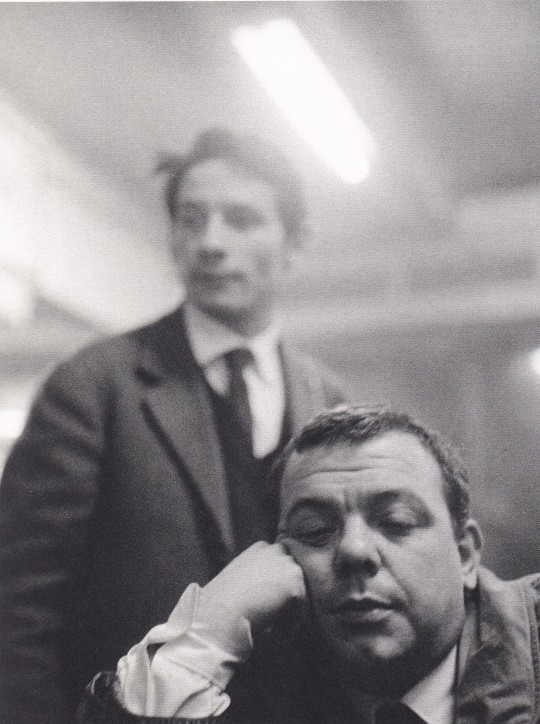


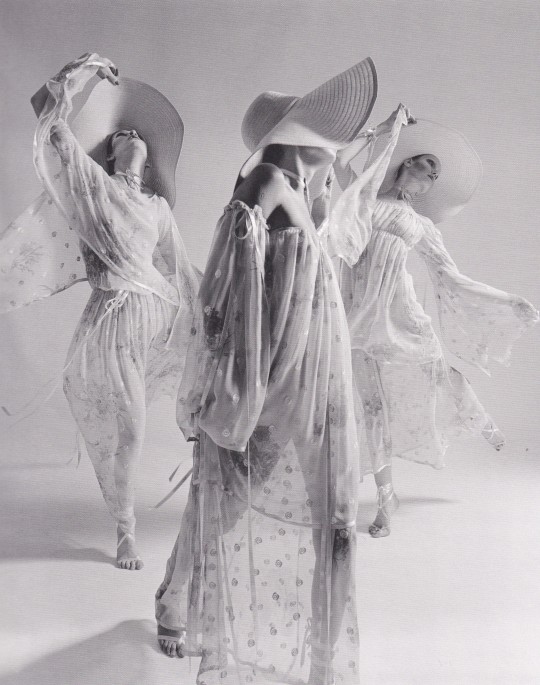
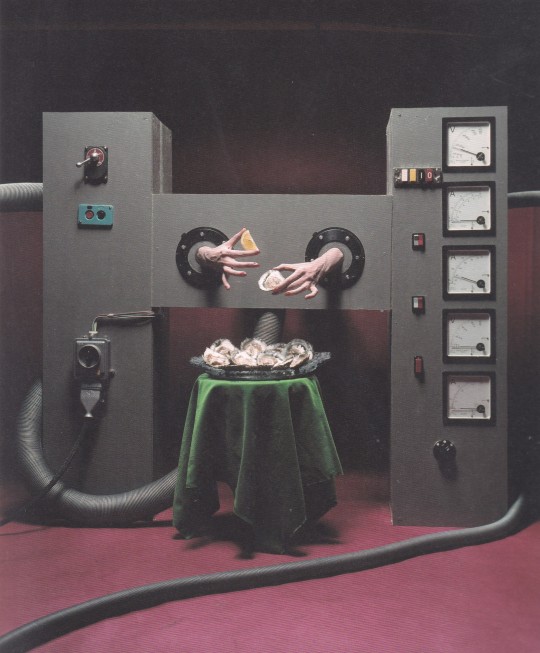
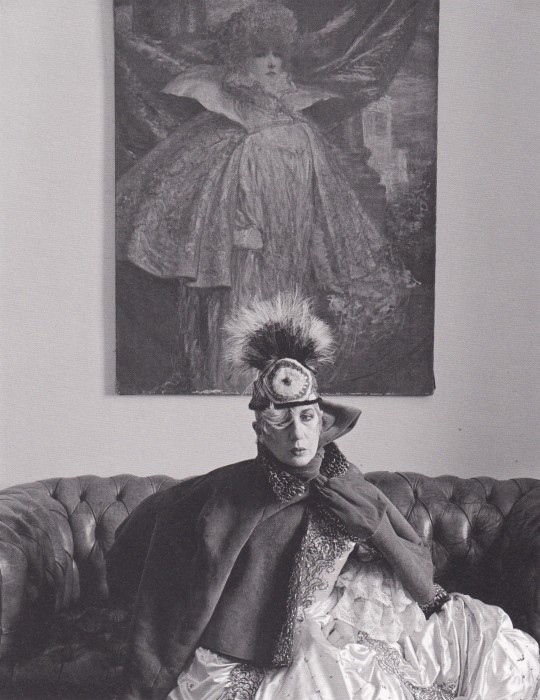



Alfa Castaldi
Progetto grafico/ Graphic design Claudio Dell'Olio assistito da Alessandro Marchesi
testi di Giuliana Scimé e Susan Bacheider, foto di Paolo Castaldi
Carla Sozzani Editore, Milano 2013, copia n.0313, 50 pagine, ISBN
9788879428507
euro 60,00
email if you want to buy [email protected]
Stampato da NAVA Milano in occasione della mostra "Alfa Castaldi" Galleria Carla Sozzani Febbraio 2013
Fotografo curioso e completo, Alfa Castaldi nella sua carriera professionale ha esplorato vari generi e tutti con grande passione e competenza. La mostra alla Galleria Carla Sozzani è un’esauriente retrospettiva arricchita da una sezione di ritratti alla moglie, la giornalista Anna Piaggi.Ad Alfa Castaldi, brillante allievo dello storico dell’arte Roberto Longhi, risultano fatali i tavolini del bar Jamaica in quel di Brera. Rientrato a Milano all’inizio degli anni ’50 dopo gli studi a Firenze, prende a frequentare l’ambiente intellettuale ed artistico che ruota attorno all’Accademiadi Belle Arti, soffermandosi spesso nel locale che, ancor’oggi, è punto di ritrovo per artisti ed intellettuali. In quegli anni, nelle sale del Jamaica piene di fumo e modelle in cerca di ingaggio, il giovane Alfa conosce Cesare Peverelli, Gianni Dova e Piero Manzoni ma anche un gruppo di fotoreporter – Ugo Mulas, Mario Dondero e Carlo Bavagnoli: per inciso, quelli che si sarebbero poi rivelati i migliori della loro generazione – che si struggono per essere considerati artisti alla stessa stregua di pittori e scultori.
Stimolato da queste nuove conoscenze, Castaldi si avvicina alla fotografia ed inizia a fare sperimentazioni, indagando il mondo attraverso l’obiettivo. Tra gli anni ’50 e ’60 viaggia moltissimo, soprattutto all’estero, documentando stili e movimenti culturali; attingendo al ricordo dei viaggi nell’Italia del dopoguerra, ancora povera e rurale, nel 1980 realizza per Uomo Vogue il servizio Compagnia di Stile Popolare, passato alla storia del costume come un reportage antropologico sulle radici popolari dello stile maschile piuttosto che come mero servizio di moda.
15/04/24
#Alfa Castaldi#Anna Piaggi#photography exhibition catalogue#Galleria Carla Sozzani 2013#photography books#fashionbooksmilano
11 notes
·
View notes
Text

Anna Magnani in Mamma Roma (Pier Paolo Pasolini, 1962)
Cast: Anna Magnani, Ettore Garofolo, Franco Citti, Silvana Corsini, Luisa Loiano, Paolo Volponi, Luciano Gonini, Vittorio La Paglia, Piero Morgia. Screenplay: Pier Paolo Pasolini. Cinematography: Toninio Delli Colli. Art direction: Flavio Mogherini. Film editing: Nino Baraghli.
Putting a force of nature like Anna Magnani in among the unknowns and non-professionals of the rest of the cast almost upends Pier Paolo Pasolini's Mamma Roma, and it reportedly caused some friction between actress and director during the filming. If Pasolini really wanted the naturalistic Magnani of Rome, Open City (Roberto Rossellini, 1948) it was much too late: By then, she had won an Oscar for The Rose Tattoo (Daniel Mann, 1955) and had become the flamboyant, histrionic Magnani who shows up on-screen in Mamma Roma. That said, Pasolini certainly gave her every opportunity to present herself that way, starting with the opening scene in which she herds pigs into the wedding dinner of her former pimp, Carmine (Franco Citti), and culminating in one of the greatest scenes (or rather, pair of scenes) of her career: the long-take tracking shots in which she walks down a Roman street at night, delivering a monologue on her life, as people appear out of the darkness and recede back into it, serving as interlocutors. It's stunning the first time Pasolini (aided by his cinematographer, Tonino Delli Colli) does it, and even more remarkable when he reprises it after a crisis in her life. I think Mamma Roma is some kind of great film, notwithstanding Pasolini's tendency to be somewhat heavy-handed in his symbolism: witness the staging of the wedding dinner as a parallel to Leonardo's The Last Supper and of Ettore (Ettore Garofalo) strapped to a restraining bed to echo Mantegna's painting of the dead Christ.
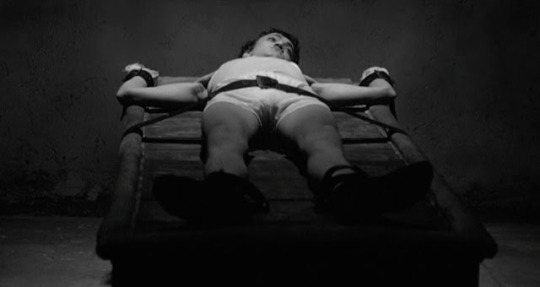

Top: Ettore Garofalo in Mamma Roma. Below: Andrea Mantegna, Lamentation Over the Dead Christ, c. 1475-78
14 notes
·
View notes
Text
Tagged by @winterandwords to share my characters' name meanings. I already posted this on my main, but I didn't repost it when I moved my writing to this sideblog, so I guess I'm doing it now!
Some of these names were chosen for their meanings, some for their associations. I also chose a lot of names based on the character's ethnicity (i.e. Anca instead of Anna, Piero instead of Peter, etc) and also how they sounded together with characters they would interact with a lot.
The Stranger series ("witch noir")
Eddie: from Eduarda. "wealth, fortune". Chosen for its common use as a noir detective protagonist, and specifically Eddie Valiant. Fred: from Frederica/Frederico. "peaceful ruler". Chosen for similar commonality in noir detectives. Jessica: Shakespeare allegedly invented this name, presumably based on Iscah. Iscah means "to behold". Chosen for its association with Jessica Rabbit. Evan: "God is gracious". Chosen for my own personal associations. Lily: references the flower, a symbol of purity. Chosen for the association with the H4rry P0tter character and through that association with JK/R and through that the political movement she's allegorical to. Lol. Angel: from Angelito. "messenger". Chosen for the meaning. Dido: meaning unknown. I don't remember why I chose it. Maddie: from Madeline. "tower". I don't remember why I chose it. Ferris: "man of vigor". I don't remember why I chose it. Anca: "favor, grace". Chosen for the meaning. Raf: from Rafael. "God heals". Chosen for the meaning. Kapua: "flower child". Chosen for the meaning. Wâpo: I fucking lost my reference for what language this is and I don't remember like a tool and my search engine is failing me as usual. I think it's in the Algonquin family of languages, and it's a word for a raccoon. But since I can't find my source I'll probably have to change it. Nine: after a cat's nine lives. Obviously I made that one up, so yeah it's chosen for the meaning lol. Toots: from Antonia. Chosen to fit the nickname, which was chosen for being a derisive endearment in the time period associated with the noir genre. Piero: "stone". Chosen for its association with the disciple Peter.
Vanilla
Vana: "God is gracious" (has the same etymology as Evan, actually). Chosen for its sound; it's the most similar name to the word "vanilla" that I could find. Dara: "fruitful, fertile". Chosen because he's Irish and hot.
Any Publicity
Asher: "happy, blessed". Chosen for the ethnicity and its ability to have a one-syllable nickname. Jordan: "descend". Chosen for the ethnicity and its ability to have a one-syllable nickname. Gwaine: "hawk" + either "May" or "field". I don't remember why I chose it. Brittany: etymology from Briton (as in the people), which means "tattooed people". Chosen for its similar sound to another name. Candy: from Candace. "queen". I don't remember why I chose it. Mason: "to make". Chosen for its similar sound to another name. Beth (Rory, they go by their surname): from Bethany. "house of figs". Chosen for being a nickname-in-common with another name. Keahi: "the fire". Chosen for the meaning. (St.) Pat: from Patricia. "noble". Chosen for its ability to be turned into a nickname/title that is a holiday.
Not Just Us
Milo: "gracious soldier". Originally was Milivoj [mee-lee-voy] and was chosen for the ethnicity and because I Just Like It, but I changed it for easier pronunciation for English readers. The two names have the same etymology. Ken: from Kenshin. "humble, modest" + "trust, believe". Chosen for the meaning and its ability to have an English-sounding nickname (baby is assimilated 😔). Topher: from Christopher. "bearing Christ". Chosen for the meaning. Lol. Buzz: unknown meaning. Chosen for its similar sound to a certain company when paired with his last name. Lmao. Virgo: "maiden". Chosen with inspiration from Persephone Valentine.
I tag @ceph-the-ghost-writer @thewardenofwinter @vhwrites @nvjackwrites and @justsome-di.
3 notes
·
View notes
Text
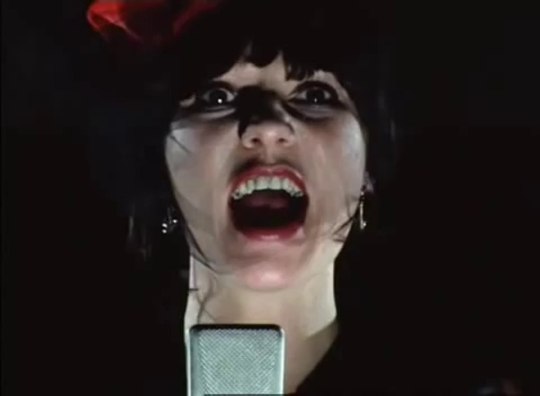
Spectacle Radio ep.100 :: 05.11.23 :: It's horrible, I love it, what is it?
Slava Tsukerman - Liquid Sky (1982) Main Titles from Quartier Mozart (Jean-Pierre Bekolo, 1992) Tokyo Kid Brothers - I kind of hate my father (Throw Away Your Books, Rally in the Streets // Shuji Terayama, 1971) De Kalafe e a Turma - Guerra (Awakening of the Beast // Joes Moijica Marins, 1970) Stelvio Cipriani - Week-end with Mary (Femina Ridens // Piero Schivazappa, 1969) Nicola Piovani - Main Titles from Footprints on the Moon (Luigi Bazzoni, 1975) - Michael Nyman - Squaline Fallaize (The Falls // Peter Greenaway, 1980) Zdeněk Liška - The Deadly Invention (Karel Zeman, 1958) Andrzej Korsynski - Main Titles from The Devil (Andrzej Zulawski, 1972) Vangelis - Entends Tu Les Chiens Aboyer (Do You Hear the Dogs Barking? // François Reichenbach, 1975)
Stelvio Cipriani - La Polizia Chiede Aiuto #4 (Massimo Dallamano, 1974) Rheingold - FanFanFanatisch (Der Fan // Eckhart Schmidt, 1982) Þeyr - Rúdólf (Rokk Í Reykjavík, 1982) Jean-Michel Jarre - Zoolook (Remix) (Magic of the Universe // Tata Esteban, 1986) Westernhagen - Celebration (Supermarkt // Roland Klick, 1974) J.A. Seazer - Buddha Child (Pastoral: To Die in the Country // Shuji Terayama, 1974) Toru Takemitsu - End Titles from The Ruined Map (Hiroshi Teshigahara, 1968)
Michael Nyman - Castral Fallvernon (The Falls // Peter Greenaway, 1980) - Phil Oakley & Giorgio Moroder // Together In Electric Dreams (from Electric Dreams, 1984) Rheingold // Fan Fan Fantatisch (from Der Fan, 1982) Hiroyuki Onogawa // from August In the Water (1995) Chuck Cirino // from Chopping Mall (1986) Yuji Koseki // from Mothra (1961) Shintaro Katsu // Otento-san (theme from Tale of Zatoichi, 1962) music from Out 1 (1971) Hussein al-Iman // music from Anyab (1981) Anna Karina // Roller Girl (from Anna, 1967) Fabio Frizzi & Cricket // You Are Not the Same (from Contraband, 1980) Stardust Brothers // Crazy Game (from Legend of the Stardust Brothers, 1985) BED: theme from 300 (2006) slowed down x3 -
Simon Boswell - It’s Horrible, I Love it, What Is It? (Hardware, 1990) Method Man - Release Yo Self (Prodigy remix) (One Eight Seven, 1997) Shriekback - The Big Hush (Manhunter, 1986) Tangerine Dream - Teetering Scales (Miracle Mile, 1988) Sue Saad - Looker (Looker, 1981) Sheryl Lee Ralph feat. Cedella Marley & Sharon Marley Prendergast - The Mighty Quinn (The Mighty Quinn, 1989)
5 notes
·
View notes
Photo
"Some like it cold. Michelangelo Antonioni on alienation, this time with Alain Delon and, of course, Monica Vitti. Even she looks as if she has given up in this one."
--Pauline Kael on L'Eclisse, 5001 Nights at the Movies
Pauline Kael did a great service in her heyday, the 1970s, by cutting through the thickets of snobbery to advance the careers of American filmmakers like Robert Altman and Sam Peckinpah. But that often meant attacking "art house" filmmakers like Antonioni and Alain Resnais, poking at their supposed intellectual pretensions. For a long time, I scoffed at films by Antonioni, Resnais, and others who got glowing notices from the high-toned critics but zingers from Kael. The bad thing is that I missed, or misinterpreted, a lot of great movies. And I can now see L'Eclisse is a great movie. One that, to be sure, Kael could dismiss as "cold" and mock for its director's use of Monica Vitti as a vehicle for his views on "alienation." Vitti's limited expressive range can be something of a hindrance to full appreciation of the film. But it would have been a very different movie if a more vivid actress like Jeanne Moreau or Anna Karina or even Delphine Seyrig had played the role of Vittoria. Vitti's marmoreal beauty is very much the point of the film: She is irresistibly attractive and at the same time frozen. Alain Delon's Piero begins to become blocked and awkward in his attempts to rouse her passion. In the opening scene, in which Vittoria tells Riccardo (Francisco Rabal) that she's leaving him, the two behave in an almost robotic, mechanical way, unable to release anything that feels like a natural human emotion at the event. We see later that Vittoria is able to let herself go, but only when sex is not in the offing and when she is playing someone other than herself: i.e., when she blacks up and pretends to be an African dancer. But Marta (Mirella Ricciardi) puts a stop to this by saying "That's enough. Let's stop playing Negroes." Marta, a colonial racist who calls black people "monkeys," evokes the repressive side of European civilization, but L'Eclisse transcends any pat statements about "alienation" through its director's artistry, through the way in which Antonioni plays on contrasts throughout. We move from the slow, paralyzed male-female relationships to the frenzy of the stock exchange scenes, from Vittoria's rejection of Piero's advances to scenes in which they are being silly and having fun. Nothing is stable in the film, no emotion or relationship is permanent. And the concluding montage of life going on around the construction site where Vittoria and Piero have seemingly failed to make their appointment is one of the most eloquent wordless sequences imaginable.

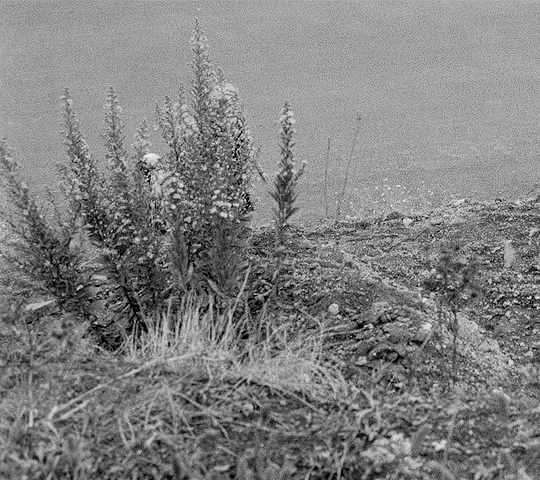


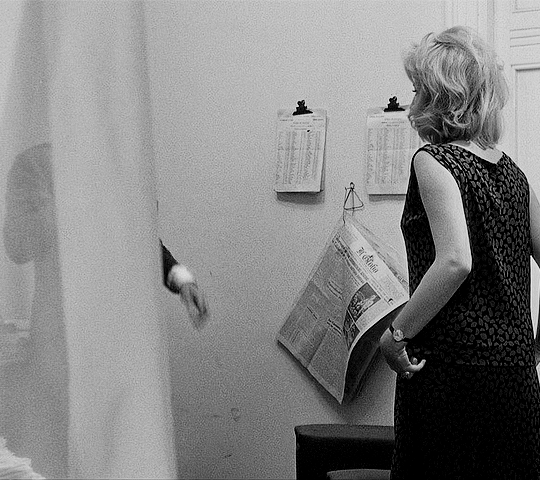

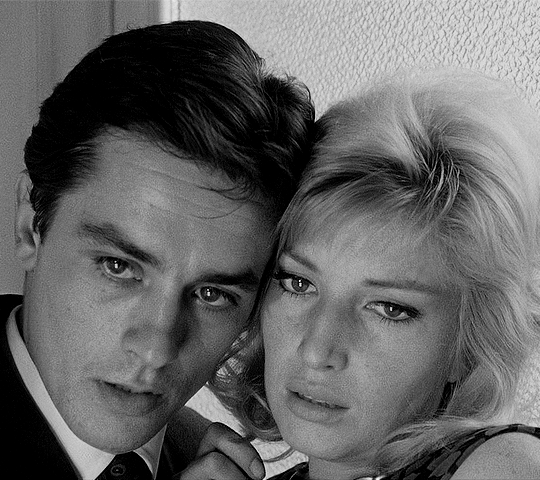
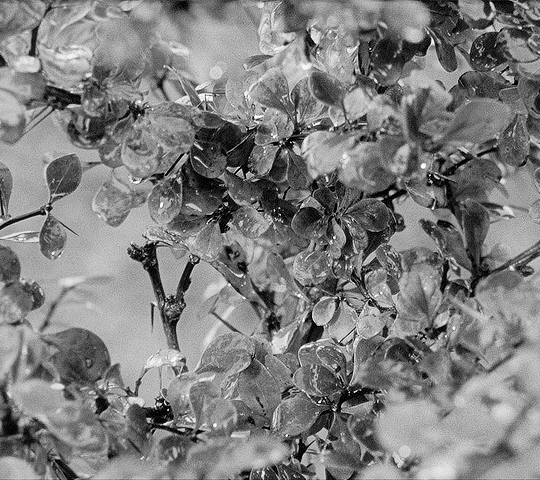
L’Eclisse (1962) dir. Michelangelo Antonioni
1K notes
·
View notes
Text
0 notes
Text
Two cousins haven’t spoken for almost twenty years, thanks to the enmity that their fathers feel toward one another. But an accident suddenly brings the cousins back together and thrusts them deep into the heart of the mafia. Credits: TheMovieDb. Film Cast: Gaetano: Salvatore Ficarra Paolo: Valentino Picone Olga: Anna Safroncik Antonio: Claudio Gioè Ignazio, l’esattore: Domenico Centamore Il vecchio sposo: Tuccio Musumeci Don Gino: Pino Caruso don Mimí: Mario Pupella mamma di Paolo: Mariella Lo Giudice mamma di Gaetano: Rosa Pianeta Pietro: Giovanni Martorana commissario di Polizia: Gino Astorina agente Pappalardo: Gaetano Pappalardo Svetlana: Maria Di Biase cameriera: Marzia Cavallo amministratore dell’albergo: Angelo Pellegrino …: Antonio Pandolfo Film Crew: Set Decoration: Paola Bizzarri Conductor: Paolo Buonvino Story: Francesco Bruni Director of Photography: Roberto Forza Editor: Claudio Di Mauro Story: Salvatore Ficarra Story: Valentino Picone Story: Giambattista Avellino Assistant Camera: Federico Angelucci First Assistant Director: Gianni Costantino Story: Fabrizio Testini Production Manager: Gianluca Passone Assistant Editor: Simone Rosati Producer: Attilio De Razza Line Producer: Giulio Gallozzi Executive Producer: Tore Sansonetti Casting: Chiara Meloni Costume Design: Cristina Francioni Assistant Costume Designer: Olivia Cutore Makeup Department Head: Simona Castaldi Still Photographer: Maurilio Scaduto Production Coordinator: Barbara Busso Boom Operator: Corrado Azzariti Sound Editor: Gianluca Carbonelli Second Assistant Director: Giovanni Calvaruso Sound: Mario Iaquone Unit Production Manager: Francesco Startari Key Grip: Enrico Stella First Assistant Director: Manuel Carlucci Assistant Editor: Roberto Pelliccioni Location Manager: Pino Cori Unit Production Manager: Federico Cori Assistant Costume Designer: Elena Moncada Script Supervisor: Cinzia Liberati Camera Operator: Davide Sondelli Production Secretary: Gianni Enrico Cori Second Assistant Director: Davide Catania Assistant Camera: Flavia Califano Still Photographer: Dario Palermo Still Photographer: Maria Pina Mastropietro Set Designer: Marcello Fida Assistant Set Designer: Aldo Di Meo Assistant Costume Designer: Stefania Lo Russo Makeup Artist: Antonella Muzzetta Assistant Makeup Artist: Isabella Sturniolo Hair Department Head: Desirè Di Mattia Hairstylist: Alfredo Danese Assistant Hairstylist: Anna Maita Gaffer: Pino Meloni Gaffer: Alfredo Meloni Key Grip: Piero Bosi Movie Reviews:
0 notes
Text

0 notes
Text



➡️🌼🙏Lunedì 6 Maggio 2024
S. Piero Nolasco; S. Venerio; B. Anna Rosa Gattorno
6.a di Pasqua
At 16,11-15; Sal 149; Gv 15,26-16,4a
Il Signore ama il suo popolo
👉🕍📖❤️VANGELO
Lo Spirito della verità darà testimonianza di me.
+ Dal Vangelo secondo Giovanni 15,26- 16,4a
In quel tempo, disse Gesù ai suoi discepoli: «Quando verrà il Paràclito, che io vi manderò dal Padre, lo Spirito della verità che procede dal Padre, egli darà testimonianza di me; e anche voi date testimonianza, perché siete con me fin dal principio. Vi ho detto queste cose perché non abbiate a scandalizzarvi. Vi scacceranno dalle sinagoghe; anzi, viene l’ora in cui chiunque vi ucciderà crederà di rendere culto a Dio. E faranno ciò, perché non hanno conosciuto né il Padre né me. Ma vi ho detto queste cose affinché, quando verrà la loro ora, ve ne ricordiate, perché io ve l’ho detto».
Parola del Signore.❤️🙏
0 notes